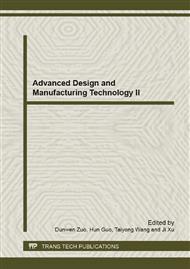p.34
p.39
p.45
p.48
p.57
p.65
p.70
p.76
p.80
Design and Application of Rapid Manufacturing Domain Ontology to Support Resource Sharing
Abstract:
Facing the abundant service resources, how to make the heterogeneous distributed resources information system has the meaning that can be understand between man-machine and machines, search conveniently and implement the resources integration, achieve information access and query better as well as the interoperability between systems, it is a challenge it faces which implementing the resources sharing and intelligence services, but also a problem which to improve the service informatization level for RM industries to be solved. To facility services resource sharing in Rapid Manufacturing (RM) industry, mainly discussed demand analysis and establishment principle of RM domain ontology. Based on the many years of experience and enterprise instances, domain ontology was described conceptual and expressed knowledgeable and model structure was established. The knowledge representation method is adopted based on the domain ontology query model and partial examples of service description are given. In order to solve semantic fuzziness and realize integration, interoperability and reusability of enterprise service by building domain ontology which can satisfy shared understanding of interested parties. On this basis, integrated service system architecture was designed to support resource sharing. The methods had been applied preliminarily and would provide the basis for the future work and extended field.
Info:
Periodical:
Pages:
57-64
Citation:
Online since:
March 2013
Keywords:
Price:
Сopyright:
© 2013 Trans Tech Publications Ltd. All Rights Reserved
Share:
Citation:


